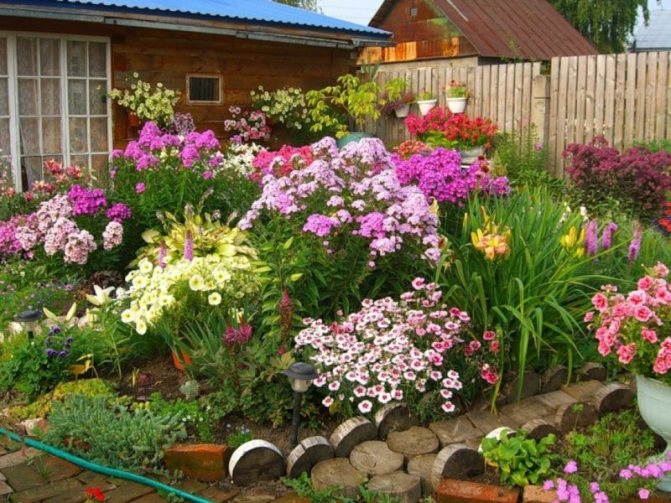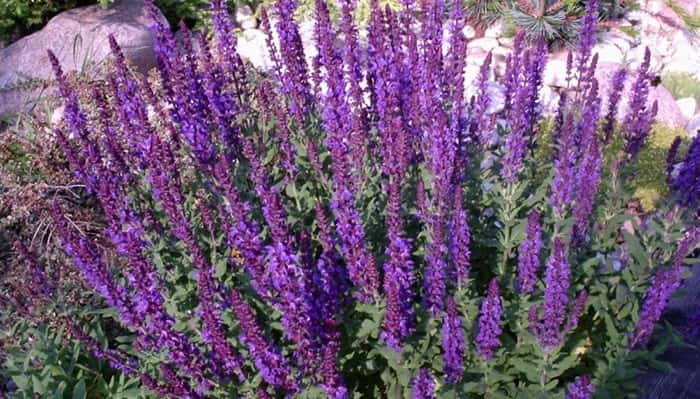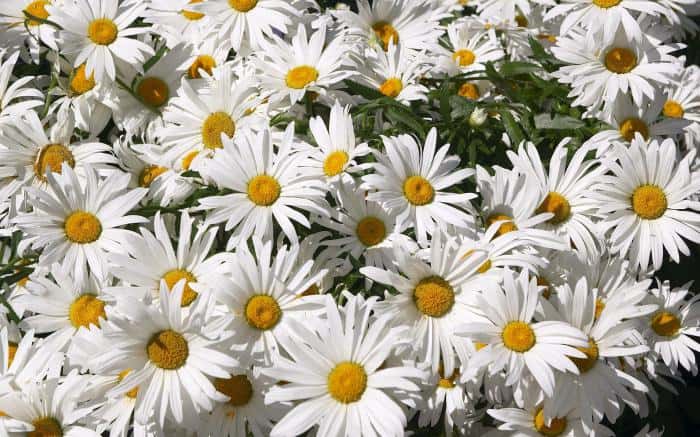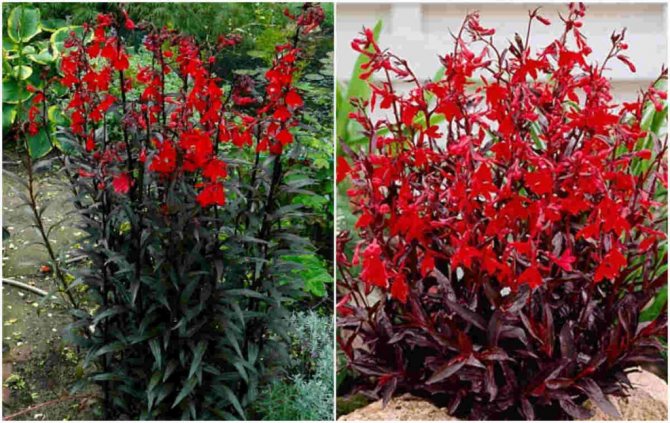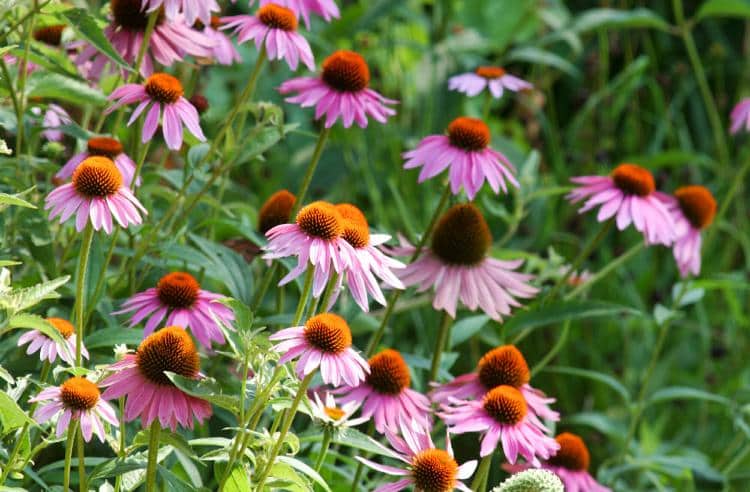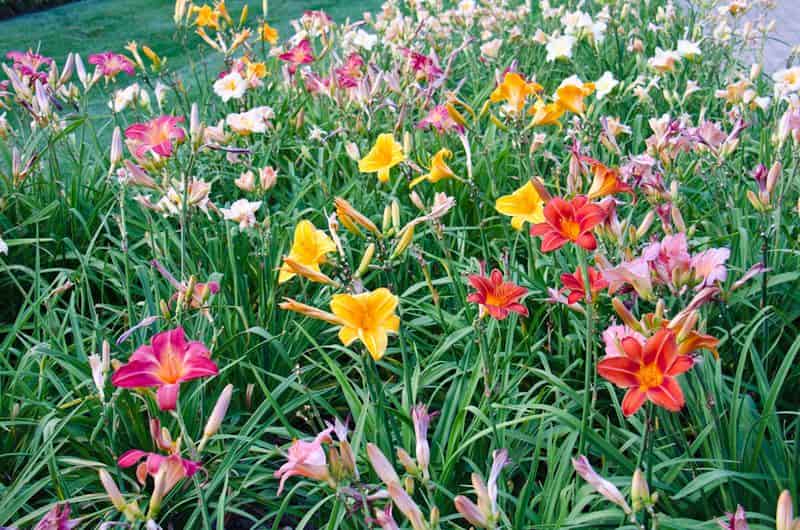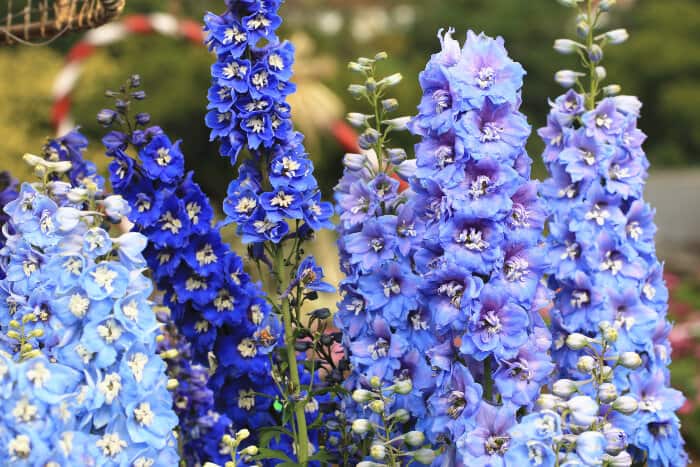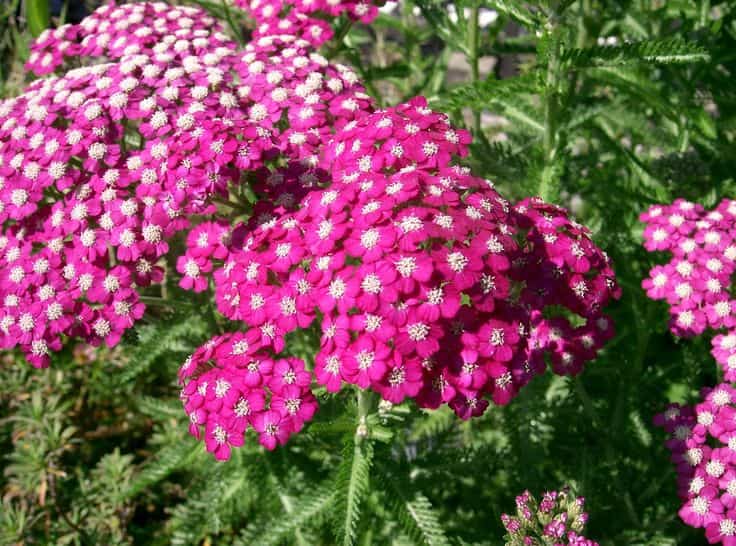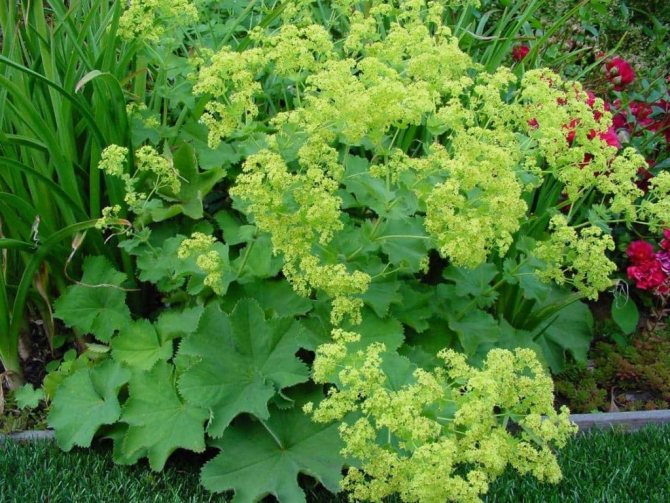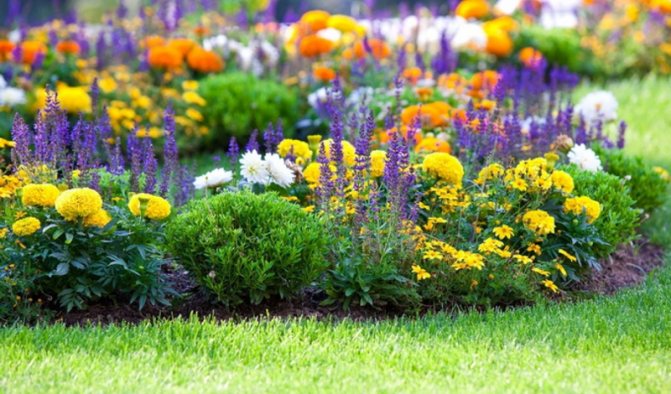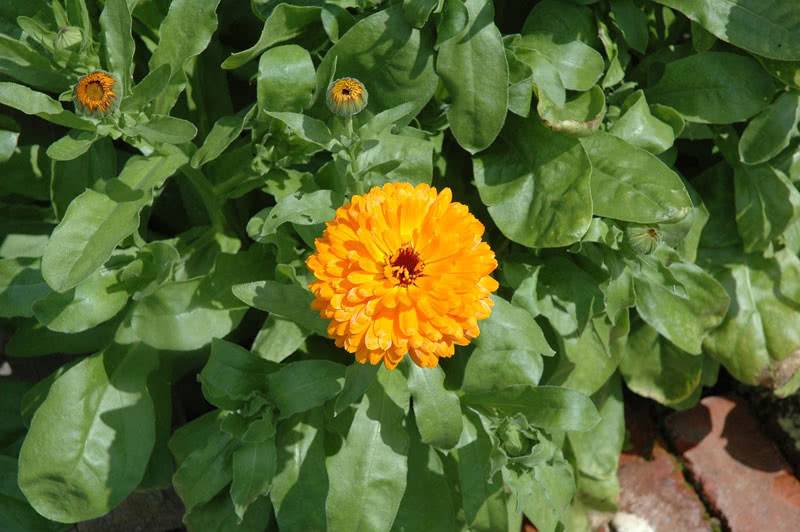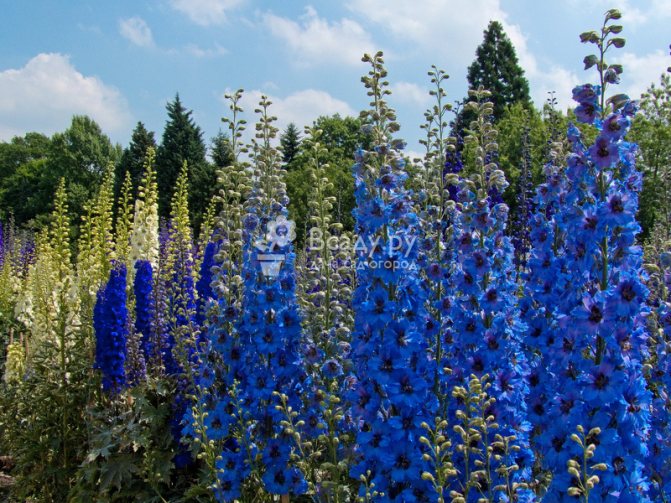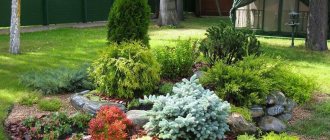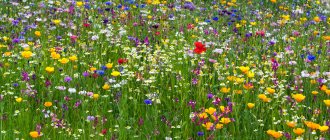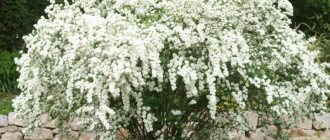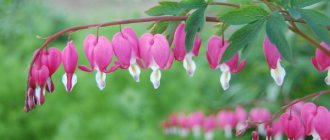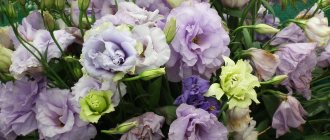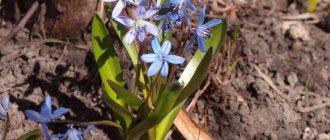TOP-10 unpretentious long-flowering annuals with photos
Annuals (they are also "letniks") are plants that bloom during one summer season. Flowers of this type are ideal for forming carpet beds and creating compositions from complex geometric patterns.
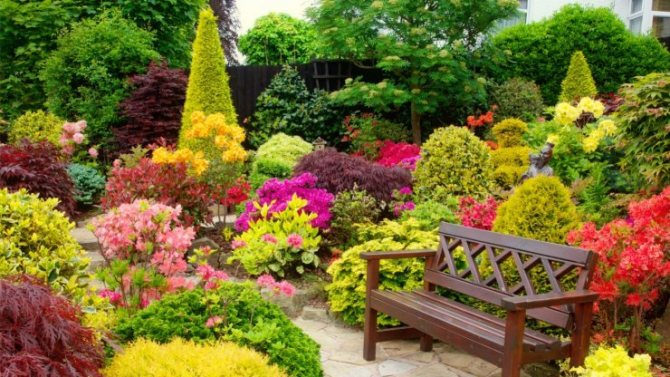
A beautiful landscape with flowering plants will delight almost any gardener
Cornflowers
The most common colors of cornflowers are blue, pink, purple, cyan and red. Sowing seeds in early spring ensures flowering throughout the summer. Interestingly, cornflowers do not require any agrotechnical work and grow like wildflowers.
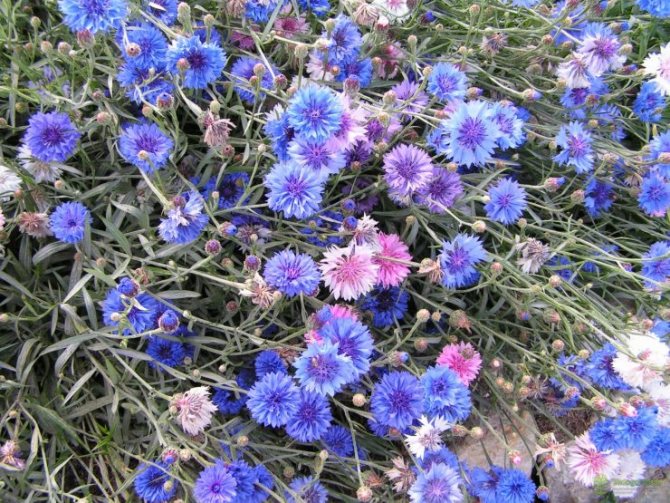

In appearance, cute cornflowers resemble snowflakes.
Delphinium (larkspur, shorshnik)
A real decoration for any garden. Differs in a pyramidal shape of inflorescences of pink, blue, white, lilac, blue or purple hue. Blooms in early summer and blooms until autumn. The optimal planting time is February.
Sometimes there are problems with the quality of seeds, therefore, for the successful cultivation of delphinium, it is necessary to stratify the seeds - store them in the refrigerator until planting. In the future, the plant will reproduce beautifully on its own.
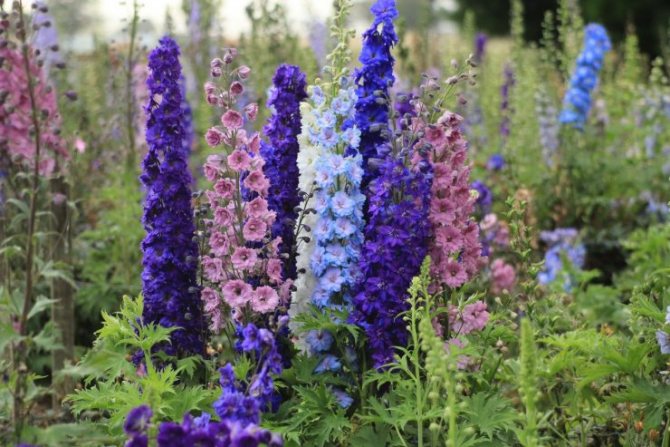

The hardy delphinium gets along with many flowers.
Calendula
The most popular ornamental and medicinal plant from the Aster family. Differs in bactericidal properties, therefore it is often used to treat kidney and liver diseases, tonsillitis, cuts and burns. The inflorescence baskets are large and small, double and simple, and their color is yellow, peach, orange and white.
The flowering period is from the end of May to the beginning of frost. It is recommended to plant calendula seeds in open ground in early spring to a depth of 2-3 centimeters. It reproduces well by self-seeding.
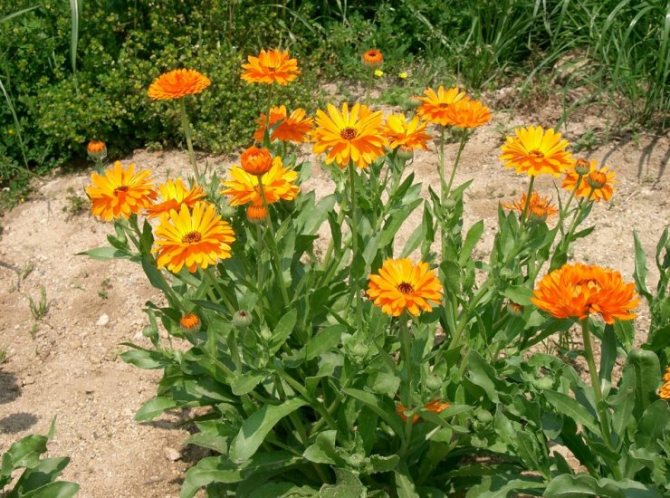

In folk medicine, not only calendula flowers are used, but also the entire upper part
Kosmeya (space)
Plant of the Aster family. White, crimson and pink "daisies" are familiar to most of our compatriots. In care, they are so unpretentious that they often grow even in landfills. Especially popular among gardeners are the new series of cosmeas "Sonata", which is distinguished by the double shape of the flowers.
It is possible to sow a flower bed with cosmey already in early spring after the snow cover disappears. Flowering in this case will begin in July and early August. It is possible to plant seeds before winter - in this case, in the spring it will only be necessary to thin out the densely sprouted shoots.
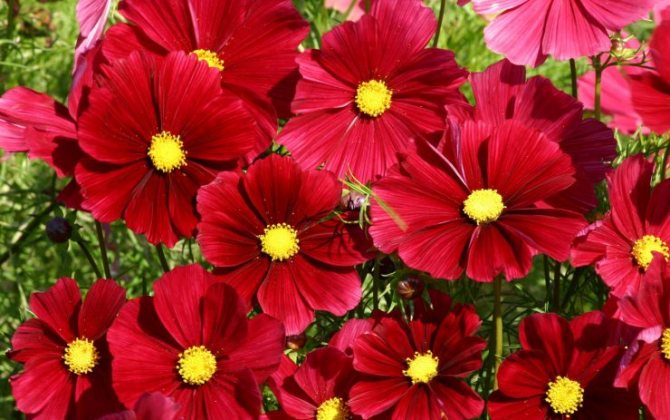

Kosmeya was first discovered in Central and South America
Lavatera (dog rose, wild rose, hatyma)
A plant of the malvaceous family. Differs in bright bell-shaped flowers of crimson, pink and white. Having planted the seeds once, there is no need to acquire them in the future. Lavatera reproduces well by self-seeding and blooms throughout the summer.
Sowing crops in open ground is recommended in the spring after the establishment of constant warm weather. However, if you want to get early flowering, the seeds must be planted for seedlings in late winter - early spring. Winter sowing can be carried out only if spring comes very early in the region or if it is possible to highlight the seedlings.
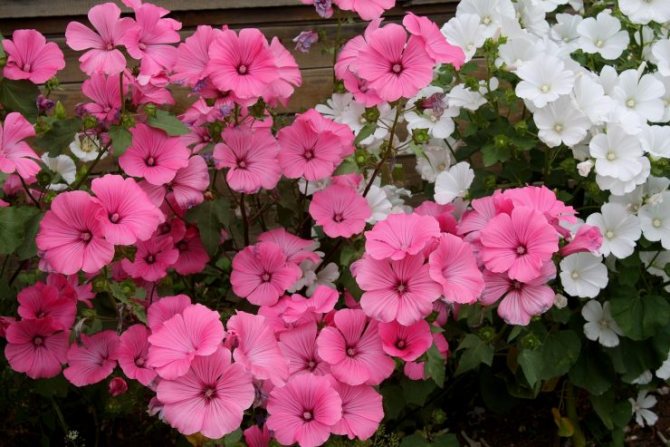

There are 25 plant species in the Lavatera genus, including shrubs and trees
Nasturtium
The color scheme of this plant is very diverse and includes many shades from white and yellow-brown to bright red flowers. You can grow nasturtium both in the sun and in the shade. This flower grows best in partial shade.
It should be planted in open ground in May, after soaking the seeds for a day. The flowering period will begin in a month and a half and will continue until the onset of frost.
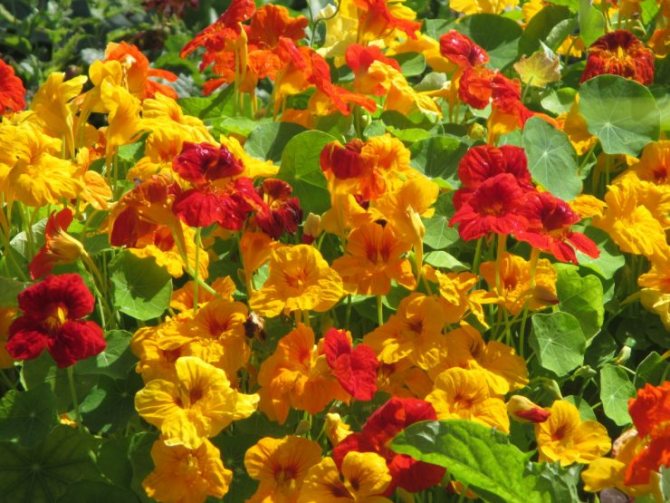

Nasturtium prefers loose, moderately fertile soils
Rudbeckia
Many gardeners compare rudbeckia with a small sun - the reason for this is the yellow color with a dark center.
It is recommended to plant this flower in the middle of summer. If you sow the seeds of rudbeckia in early autumn, then you can admire the bright large flowers throughout the summer. If then you do not collect the seeds, then in the new spring you can see the friendly shoots of self-seeding.
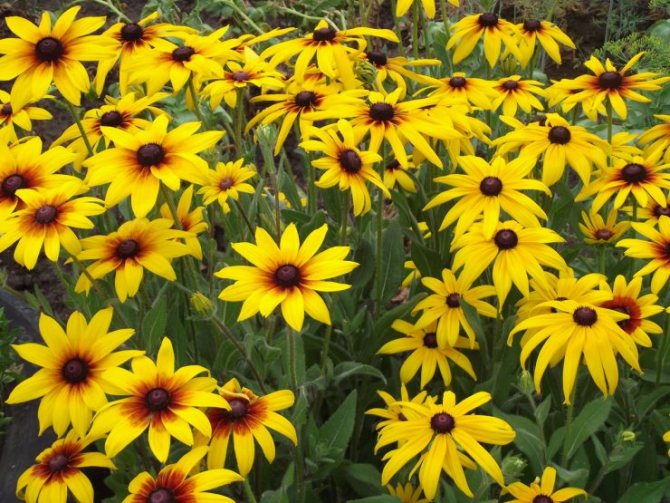

Rudbeckia inflorescences are similar to chamomile, sometimes it is called the autumn chamomile.
Tagetes (black shaves, marigolds)
One of the most popular plants actively used to decorate city flower beds. Flowers are large and miniature, high and low. A distinctive feature is not only beauty and unpretentiousness, but also the ability to scare away harmful insects.
Sowing seeds in open ground is possible when the earth warms up to 14 ° C, but sometimes self-seeding occurs. Flowering begins in June and lasts until autumn frosts.
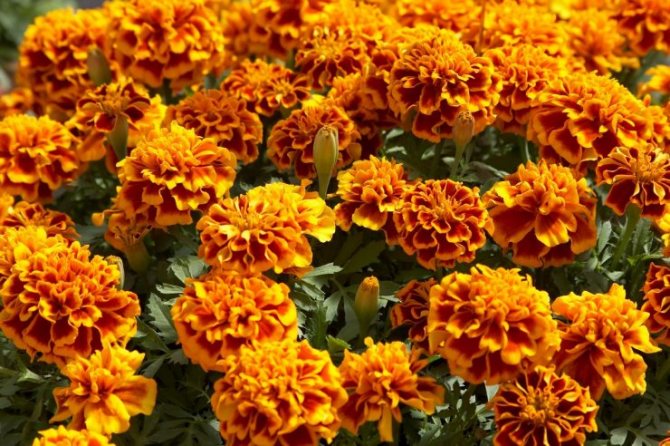

Tagetes are valued for their abundant and long flowering.
Phlox
The variety of colors of this plant amazes even experienced gardeners. The star-shaped flowers look especially unusual. Despite the high degree of drought tolerance, it is recommended to grow phlox in partial shade.
Phlox can be propagated not only by seeds. Cuttings are carried out from mid-May to June. Then, in a month, the plant will have a root system and by autumn it will bloom. Sowing seeds for seedlings is done in March - April, and in open ground - in May. In the first case, phloxes will bloom all summer, and in the second, only at the end of summer. You can plant seeds before winter in October - November. In this case, the landing site will need to be insulated with dry grass or leaves.
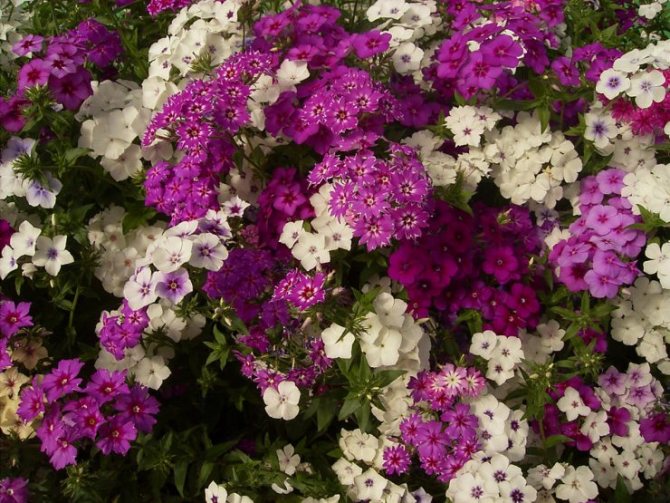

In Europe, incredibly fragrant phlox began to grow in the middle of the 18th century.
Eschsholzia (California poppy)
Prefers light soils in sunny open spaces, has a high degree of drought tolerance. It can be yellow, purple and white, double and semi-double. If the seeds are not collected in time, then next year it will be possible to meet escholzia in the most unexpected areas of the garden. The pods are capable of shooting grains over fairly long distances.
To get flowering at the beginning of summer, you should start sowing seeds for seedlings in early March. The flowering period in this case will be from June to the very frost.
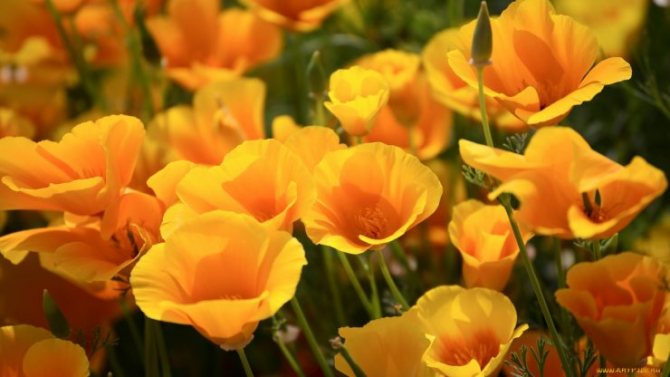

Escholzia is often used in Moorish lawns
Video: an overview of annual flowers for a flower bed in the garden
Conifers are often used for arranging landscape design. What types exist, for which areas are better suited, read in our material:.
Perennial flowers
For lovers of stability, people who do not have the opportunity to fully care for plants, perennial unpretentious flowers are ideal. With such, there are no problems at all. It is enough to plant the bulb or seedlings once in the ground and observe the growth, flowering and reproduction.
Perennial flowers tolerate winter well.
- Crocuses, daffodils, hyacinths. The very first bulbous flowers that wake up immediately after the snow melts.They do not bloom for long, but they grow very quickly. After a couple of years, the bush can be divided.
- Tulips. You can choose varieties according to the flowering time and they will delight with their flowering for a whole month. Propagated by bulbs.
- Dahlias. Flowers of various shapes and colors look solid and noble. Propagated by tubers, like potatoes, by dividing. They are perfectly preserved in basements and cellars.
- Hydrangea. A gorgeous plant is shrubby and tree-like. There are liana-like varieties, reaching a length of 30 m. Flowers are divided into deciduous and evergreen. Huge inflorescences-balls look aristocratic and bewitching.
- Irises. One of the most unpretentious representatives of the flora. They grow in absolutely any area. They can be without watering for a long time. They multiply quickly, do not require care during this season.
- Allium (decorative bow). Does not require maintenance, grows on any soil, unpretentious to watering and lighting. Ball inflorescences look harmonious in any flower arrangement.
- Peonies. Huge and delicate flowers will grow very quickly on the site. Even after flowering, chic green bushes adorn the site. Looks great as a curb along garden paths and fences.
- Host. The advantage of the plant is a sprawling green bush that can grow even in the shade and under trees. The arrow flower is not a priority, the hosta will decorate any flower bed by itself.
- Lilies. “Royal blossoms last for two weeks but are worth planting for their unusual shades and graceful shapes. Propagated by root crops.
- Astilba. Propagated by rhizome. Differs in a long flowering period, fluffy multi-colored panicle inflorescences.
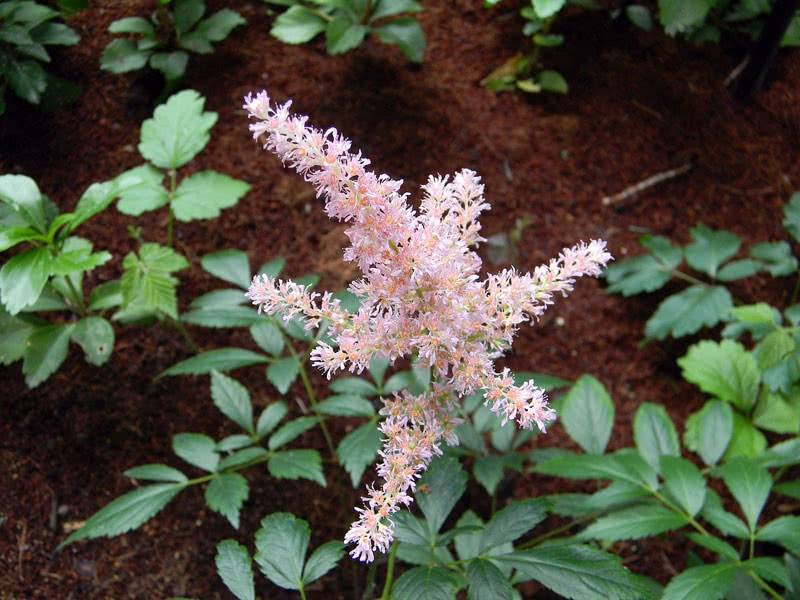

Pink Astilba
Alternate planting of annuals with annuals. This facilitates care, allows you to control overgrowth.
The advantage of perennials is intensive growth and reproduction in any conditions. You can refine and decorate the site beautifully only once by planting perennial plants. It is advisable to plant perennial flower beds periodically, to prevent planting from thickening.
The procedures can be carried out in the spring, with the onset of stable heat, or in the fall, before frost. When replanting plants to a new location, apply fertilizer and drainage to avoid stagnation.
TOP-10 unpretentious long-flowering perennials with photos
When choosing perennials, one should focus on the maximum possible size of an already adult plant. Groups of such crops are formed by size and flowering time. In this case, it is necessary to take into account moisture, soil and light preferences. If watering can be difficult, it is recommended to choose drought-resistant specimens.
Aquilegia (catchment, orlik)
They grow in the front or middle of the flower row. They can reach 80 centimeters in height and spread up to 50 centimeters in diameter. They differ from their wild relatives by the number of petals on the flowers. Extremely hardy and resistant to all summer weather. The flowering period usually begins in June - July and, with proper plant care, continues until late autumn.
Seeds should be sown in moist compost in autumn or late spring. It can take three months for the seeds to germinate - during this time, keep a plastic-covered pot on a greenhouse shelf or window sill in your home away from direct sunlight.
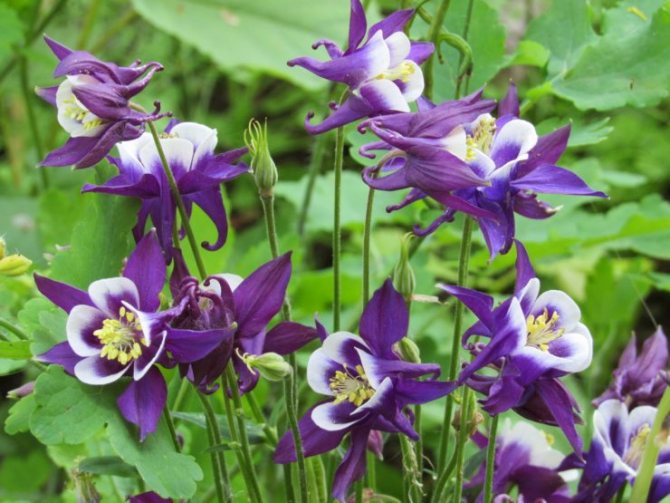

Gardeners love aquilegia for unusual flowers and delicate foliage.
Alissum
Unpretentious perennial shrub-type flower with a pleasant, special smell. Alyssum's typical colors are white, lilac, pink, yellow, purple and blue. Resistant to drought and heat, but grows best in partial shade. It blooms from spring to autumn.
To grow alissum, it is necessary to sow the seeds directly into the soil in warm spring or autumn.Another option is to grow seeds in a greenhouse or pots at home during the spring, and then plant flowers at a distance of 15 centimeters from each other.
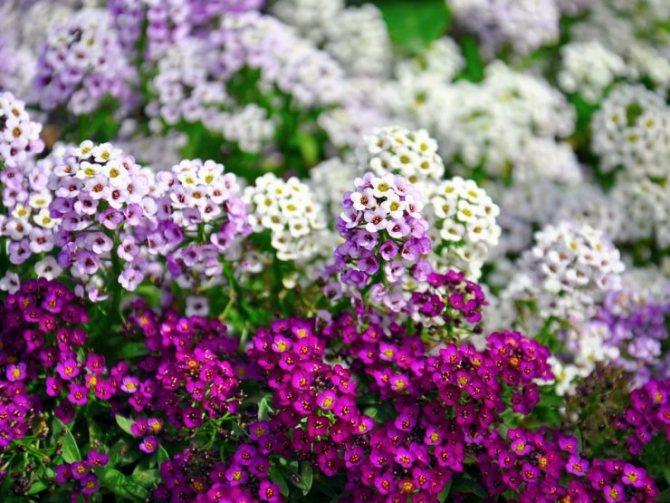

An alpine slide or border is well decorated with alyssum
Ayuga (tenacious)
An extremely unpretentious undersized plant that can survive on any soil and with any watering. In late spring, it blooms with blue, white and pink flowers, collected in a long inflorescence. It does not fade for a long time and remains bright throughout the summer season.
Sowing seeds in open ground should be done in the spring, when the earth warms up enough, or in the fall - when it has not yet had time to cool down.
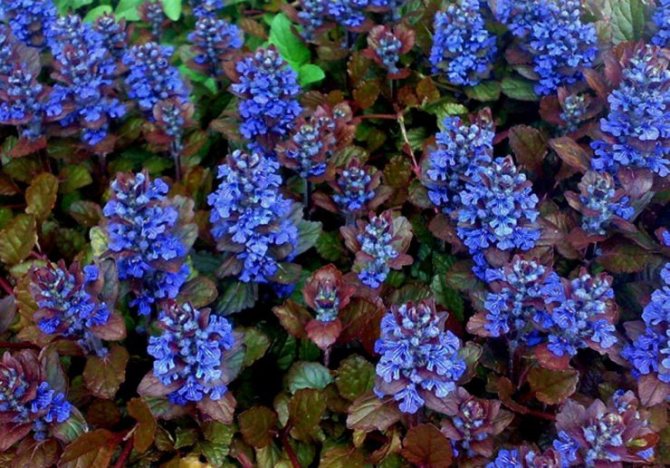

Groundcover Ayuga grows into a colorful carpet
Verbena
Unlike many other perennial plants, verbena is not so hardy, so to overwinter it must be covered with protective mulch. Easily spreads to the areas adjacent to the planting area. It has an attractive aroma and is in great demand among butterflies.
You can grow verbena from seeds. To do this, you need to plant them in pairs in pots at the end of winter or early spring. Leave containers in a bright, but not sunny window. After the sprouts have reached sufficient size, each plant should be placed in the ground in an open area at a distance of 25-30 centimeters from each other. With proper care, verbena can bloom until frost.
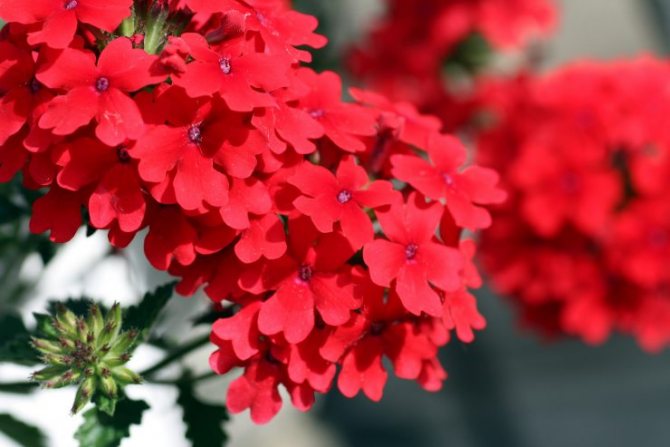

Active watering is contraindicated in verbena
Spike veronica
A distinctive feature of this plant is a tower of blue star-shaped flowers and a low height - only about 30 centimeters. Grows well in containers, blooms for a long time (June to August).
In order to grow spiked Veronica in your garden, you need to choose a sunny spot with well-drained soil and place the seeds directly in the soil. It is recommended to do this in the second half of autumn, when the frost has not yet come and the soil has not become too cold. It is possible to plant seeds for seedlings in early spring, but in this case hardening of the seed material is necessary. And in fact, and in another case, the plants will bloom only in the second year of life.
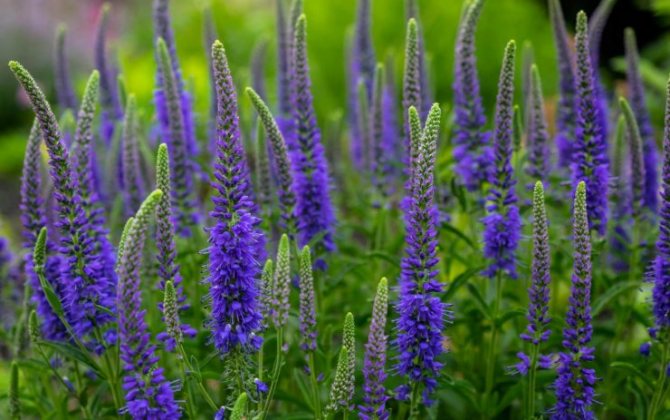

Veronica spicata is used in folk medicine and to decorate flower beds
Carnation
Due to its low height (only 10-15 centimeters), it is recommended to place a carnation along the front edge of the flower garden. To grow carnations, the seeds should be planted in trays in the fall and placed in a cold place. Upon the arrival of spring, transplant them to their final position in a sunny area. It is allowed to grow seeds in pots on a sunny window or in a greenhouse, followed by transplanting sprouts into open ground. The seedlings must be sufficiently developed for this.
The flowering period begins in early summer and lasts until the first cold weather.
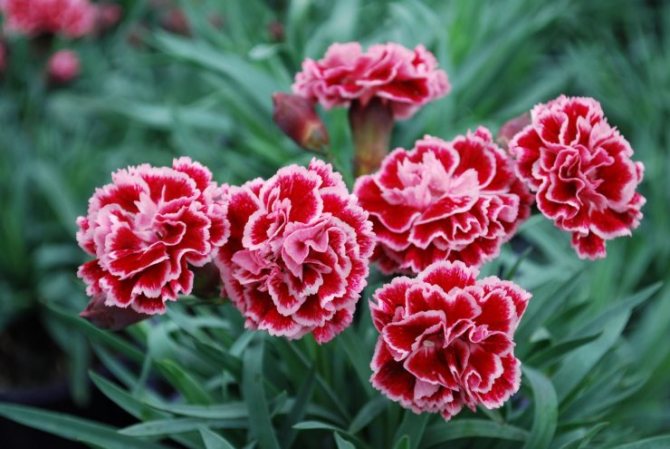

Carnation is grown as an ornamental plant for the garden and for cutting
Iris (iris)
An amazing perennial with many varieties. Some varieties prefer moisture and are able to grow directly in water, and some do not require watering even on the hottest summer day. Flowers appear if the plant is in direct sunlight or in partial shade, they last for a long time. The time of their appearance depends on the specific type and variety of the flower (dwarf irises tend to bloom in spring, and tall ones - in summer).
You can plant irises in open ground in both spring and autumn.
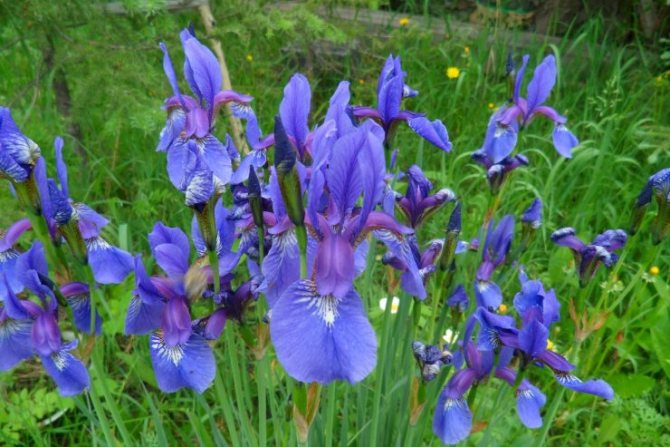

Even evergreen varieties of iris are found in nature.
Knifofia (kniphofia)
A flower with fiery spiers capable of growing up to 90 centimeters in height. It is recommended to place it in the middle of the flower garden. Blooms throughout the summer, tends to grow. He loves moisture, however, like most plants, he does not tolerate stagnant water in the roots.
Sowing seeds is recommended in March and early April.
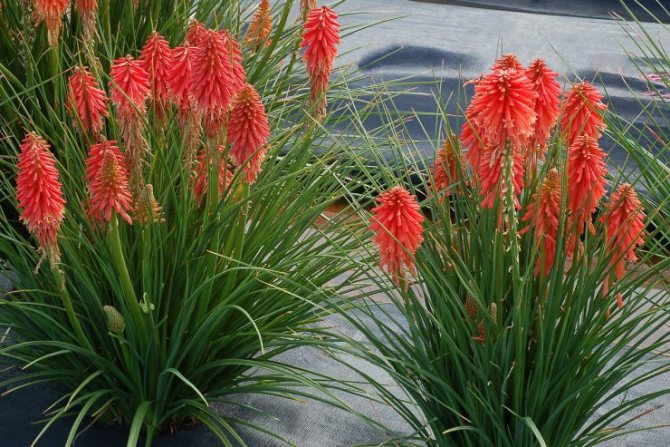

Knifophia needs good drainage
Day-lily
An unpretentious flower plant that prefers sunny places. Blooms in summer for several weeks. The life of a flower is one day, but there are quite a few of them on long peduncles. If you remove wilted peduncles in time and feed the plant, then the daylily will constantly throw out new arrows. In remontant varieties, flowers appear until the onset of frost.
The daylily planting time is one of its advantages, because it covers the period from early spring to late autumn. If the cold period begins early in the region, then it is recommended to plant this flower at least a month before the onset of frost.
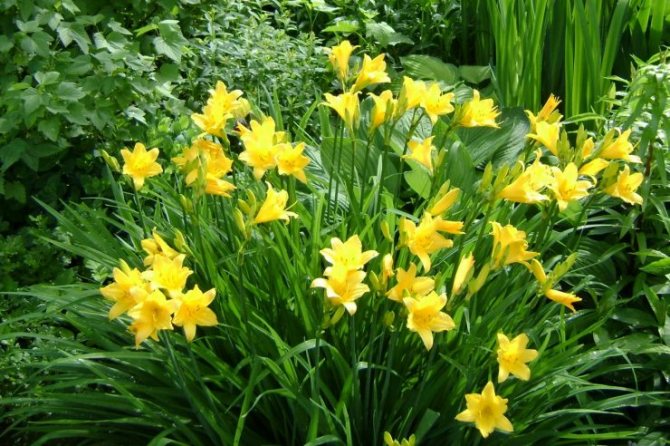

Mass flowering of daylily is observed in a well-lit area
Pion
Old varieties of this plant are extremely unpretentious, but among new cultivars, many require close attention. Peony blooms, as a rule, in late spring. Able to grow both in the sun and in partial shade. If at least a couple of hours a day direct sunlight will fall on the plant, then it will bloom beautifully in the shade. The more darkened the peony grows, the longer the period of its flowering lasts.
The optimal time for planting peonies in open ground is late summer-early autumn, but if necessary, they can be planted in spring.
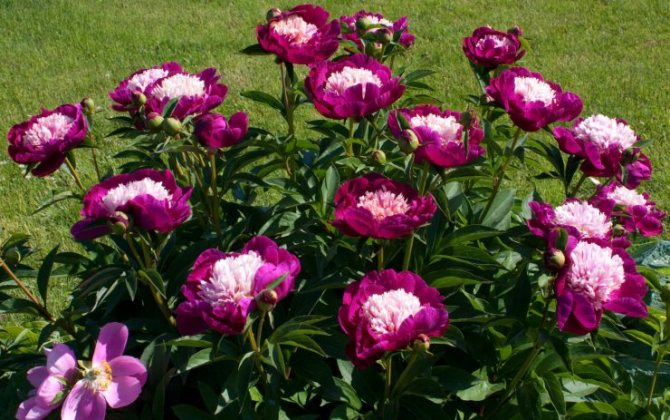

Peonies can be both herbaceous and shrub forms.
Video: the most beautiful unpretentious perennials
It's nice when the area around the house is ennobled and decorated with flowers and outlandish plants. And it's not a problem if the plot is small, you can equip a small and cute front garden on it:.
To decorate your garden with unpretentious plants, you need to remember that forming floral carpets with clear lines is best from annual plants. The overgrowth property of perennials can interfere with this effect.
Rate the article:
- 5
- 4
- 3
- 2
- 1
(6 votes, average: 4.8 out of 5)
Share with your friends!
Ways to decorate your garden
There is a huge selection of plants that do not take long to care for. But before choosing them, let's decide in what way they will be planted. Let's consider some ways:
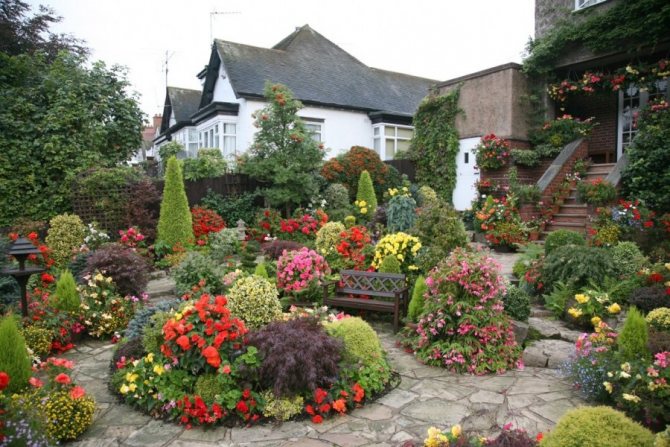

Flower garden creation. A flower garden is an area where flowers and ornamental plants grow. Several types of flower beds can be distinguished - these are flower beds, mixborders, rabatki, front gardens.
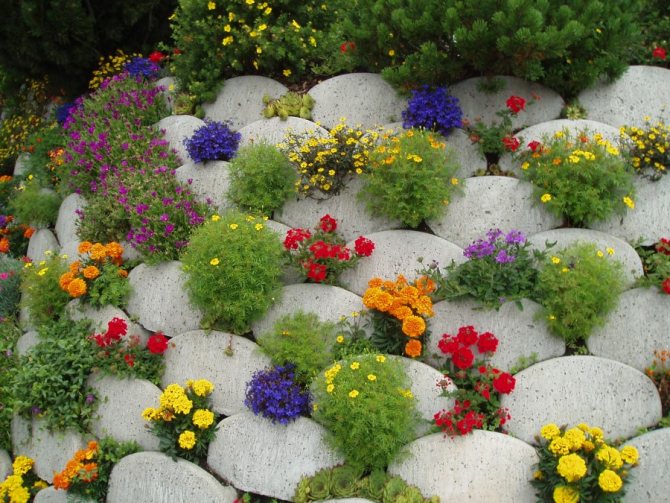

To make the flower garden happy for a long time, it is recommended to take perennial flowers as a basis. To add freshness and novelty, you can plant annual plants every year. When creating a flower garden, it is best to use an open space.
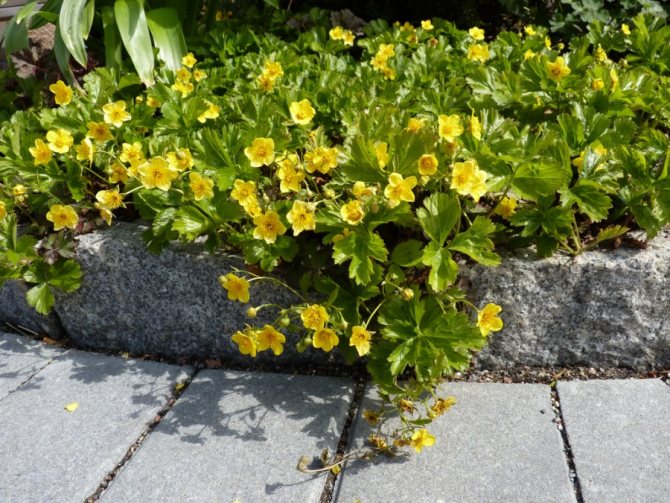

Lawn use. If you plant a grassy lawn, then the first time you need to take care of it. But there is also a Moorish lawn, which consists of delicate field plants. Such a lawn looks quite dignified.
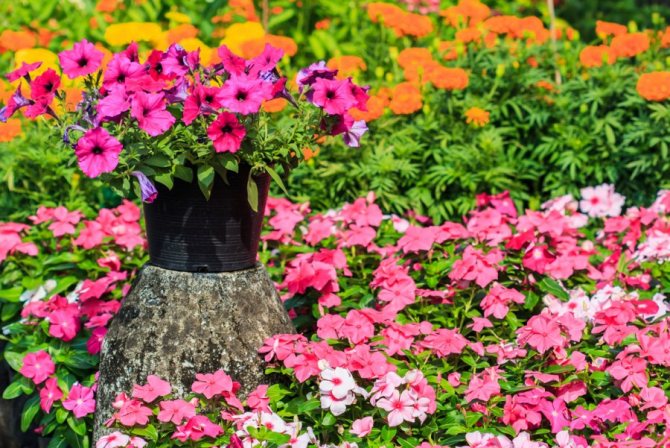

Using hedges. Ornamental shrubs look attractive in the garden. But it is better to choose plants that do not need regular trimming.
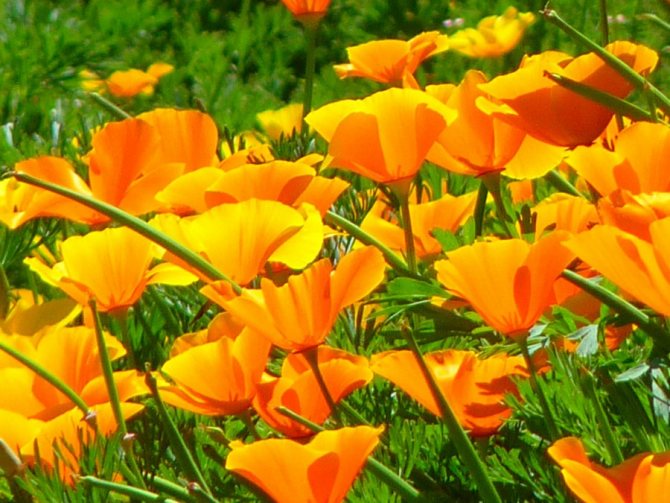

Vertical gardening. With this landscaping, climbing plants are used. They give vertical structures a beautiful appearance and help to hide minor defects in the structure. Girlish grapes are well suited for such landscaping.
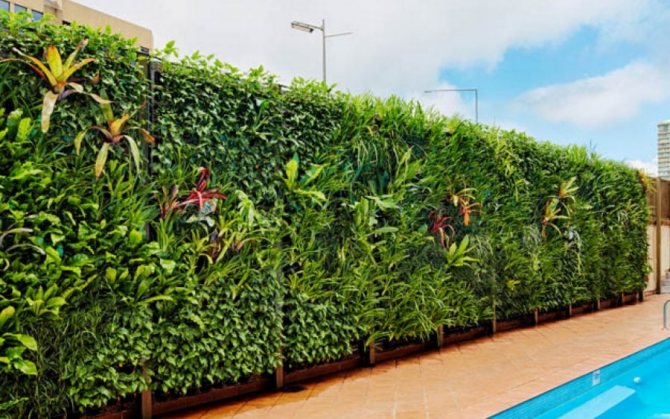

Hosta (Latin Hosta)
Landscapers love the host for its spectacular green leaves that can beautifully set off any floral arrangement. This plant is suitable for summer residents who prefer a lazy garden. The culture easily tolerates drought, frost, shade.
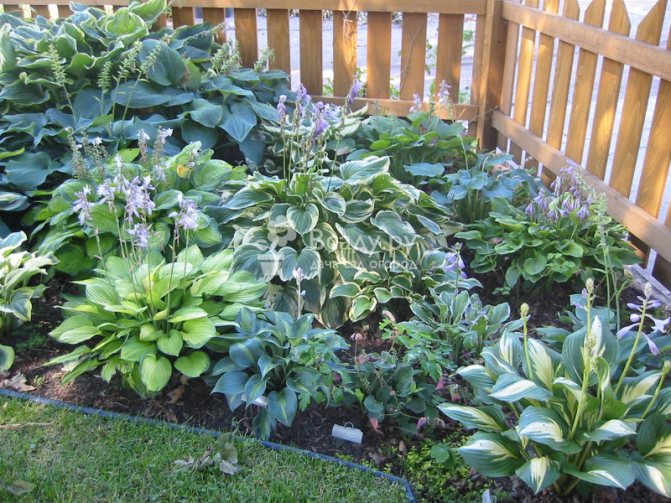

The host is chosen as an evergreen, against which the flowers look even brighter
Flowering begins in June, and the leaves remain fresh and attractive throughout the season. This perennial can be propagated by dividing the bush.
Daisies (Latin Bellis)
An unpretentious plant, blooms from early spring to the very frost with a short summer break.Flowers blend well with other plants in multi-toned flower beds, look good along curbs and in containers.
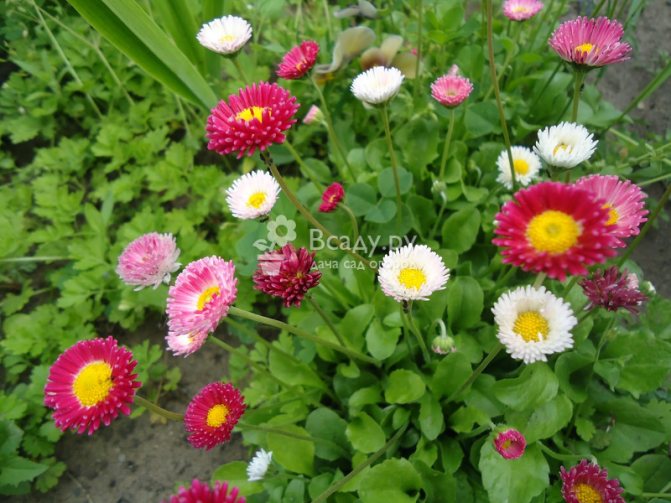

Daisies bloom from early spring to late autumn
When planting daisies in the ground, I choose sheltered from the wind and dry places so that there is no risk of severe freezing of the soil in winter. I use humus as a fertilizer. Regular and abundant watering is important for this culture.
We offer reliable solutions


Garden's Dream landscaping company will help you create an unpretentious and fragrant garden. We reasonably approach the selection of plants, place them correctly, take into account the size of the crowns in perspective, and create harmonious compositions.
In contrasting groups, we use crops that differ in height, crown shape, and color of leaf plates. We introduce modern technologies that make life easier for the gardener, we offer new breeding products that luxuriously decorate the garden. Landscaping from professionals will keep your garden attractive for years to come.
Rudbeckia (lat.Rudbeckia)
This plant is also known under the names: Fireball, Sunflower, Echinacea dissected-leaved, Golden ball. This tall perennial with purple or orange flowers is chosen to saturate the area with bright colors.
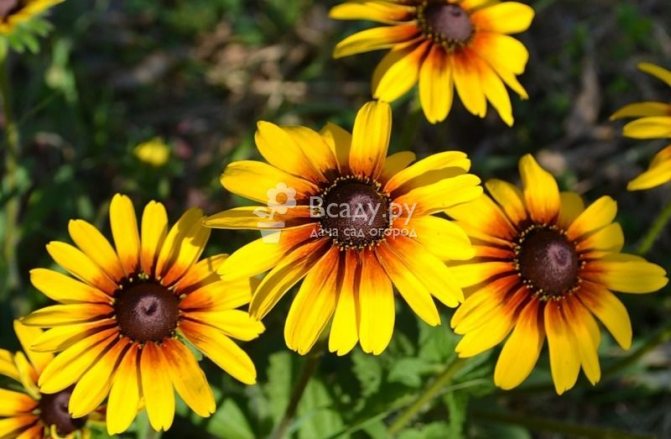

The sun flower, or rudbeckia, will draw attention to architectural buildings
Rudbeckia propagates by seeds, or by dividing the bush. I plant these flowers along the fence, and also frame country buildings and architectural objects with them to highlight and emphasize them against a green background.


